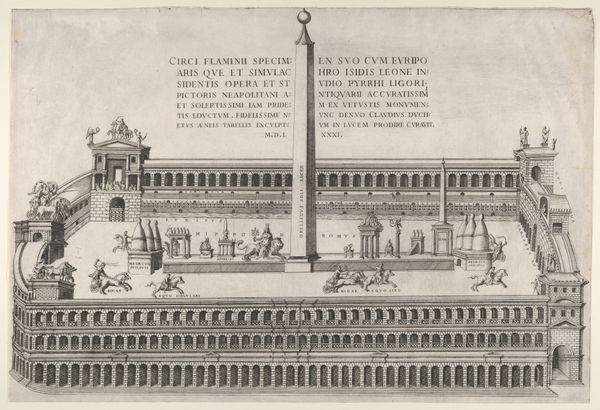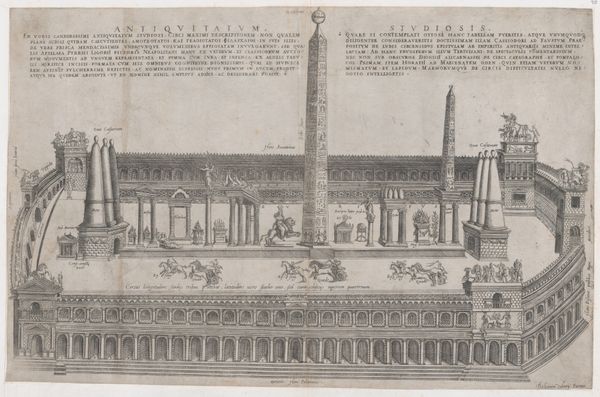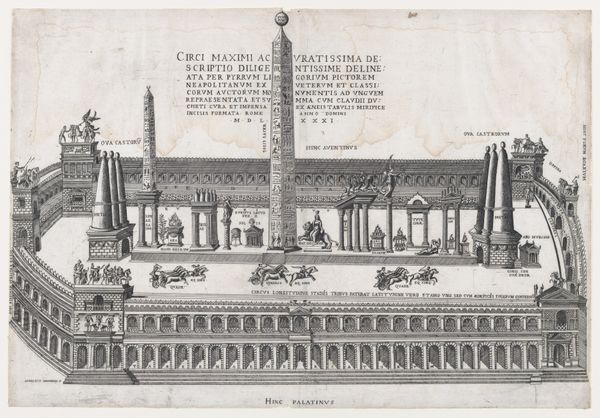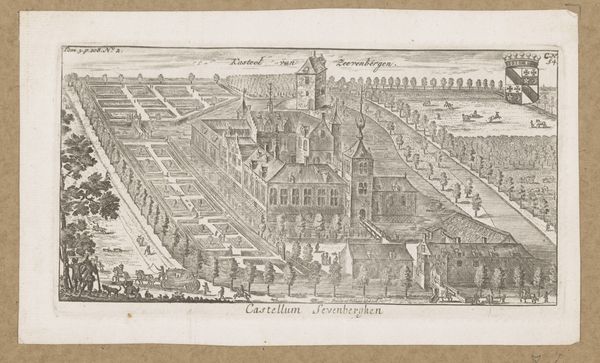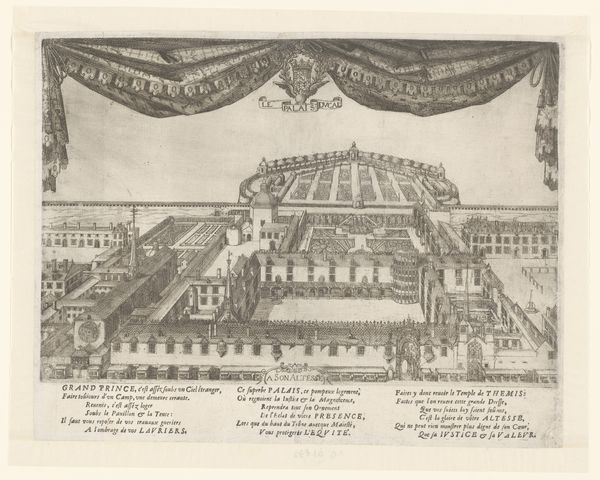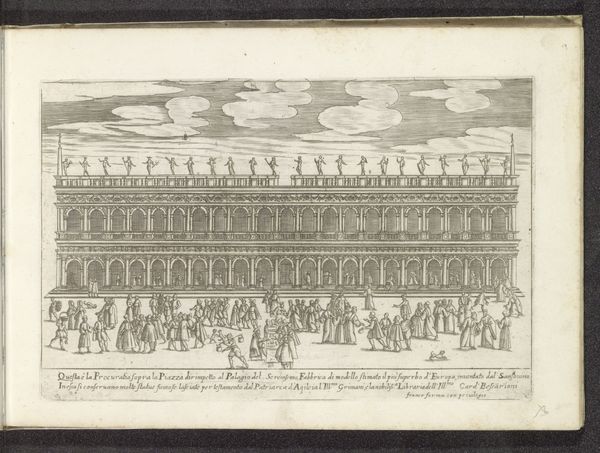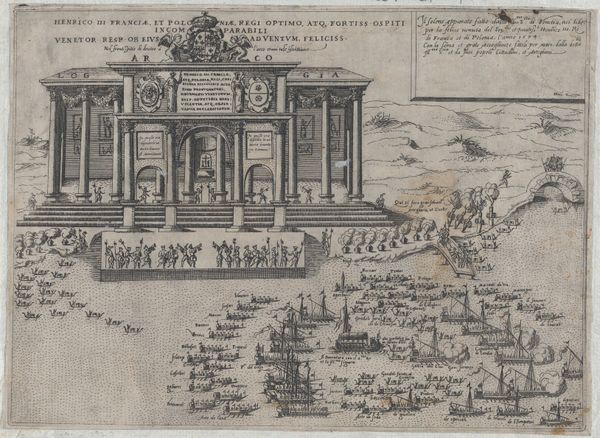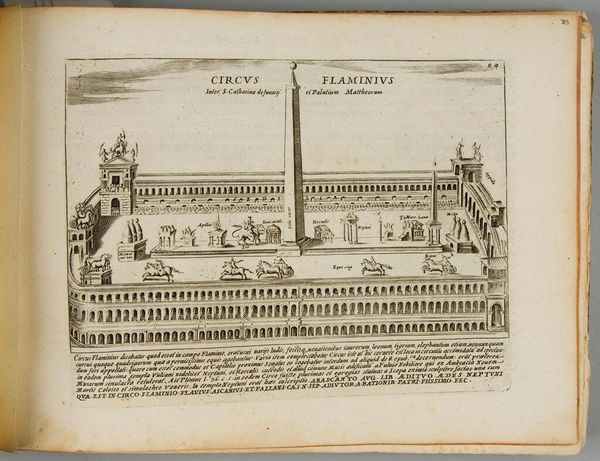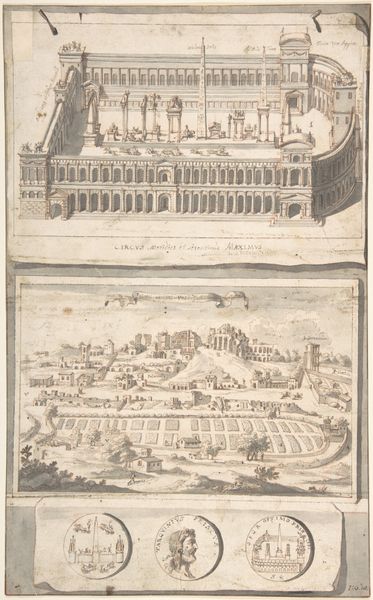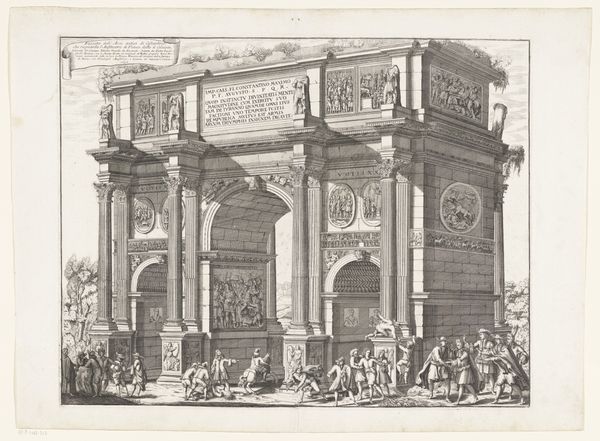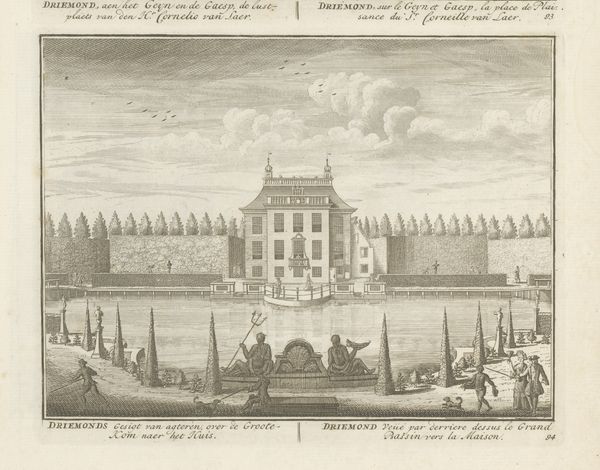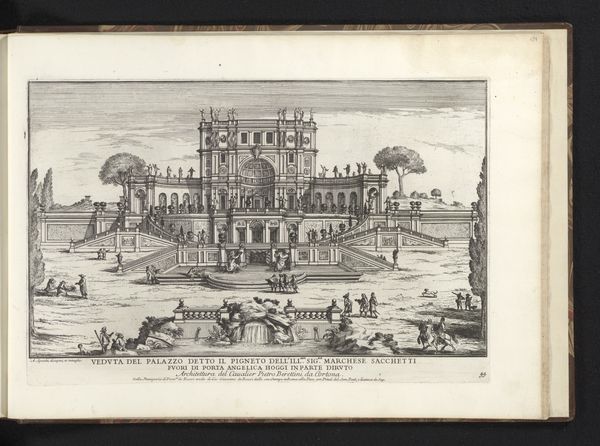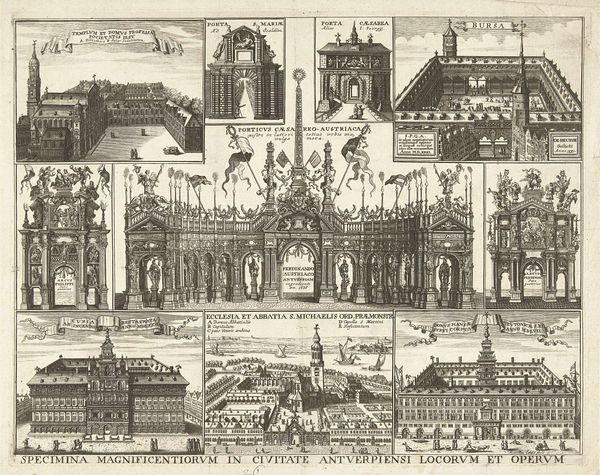
Speculum Romanae Magnificentiae: Circus Flaminius 1553
0:00
0:00
drawing, print, engraving, architecture
#
drawing
# print
#
11_renaissance
#
geometric
#
line
#
cityscape
#
history-painting
#
engraving
#
architecture
Dimensions: sheet: 14 9/16 x 21 7/8 in. (37 x 55.5 cm)
Copyright: Public Domain
Curator: This print, "Speculum Romanae Magnificentiae: Circus Flaminius" by Nicolas Beatrizet, made around 1553, showcases an imagined reconstruction of the ancient Roman circus. It’s fascinating to consider it's rendered through engraving, a process reliant on careful, precise labor. Editor: It's striking how geometric and orderly it is. I’m also a little surprised by how it depicts the city. How would you interpret this work? Curator: I see this print not just as an architectural rendering, but as a product deeply embedded in the material conditions of its time. The act of engraving itself, the labor, and the distribution of these prints, allows for the visualization, the consuming, of this "idealized" version of Rome, of an ancient site re-constituted. Do you consider who may have purchased such a print, and to what end? Editor: Well, I imagine wealthy patrons, perhaps nobles or scholars, buying them as a sort of status symbol or intellectual curiosity? Almost like a souvenir, but from a reconstructed past? Curator: Precisely. And think of the paper, the ink, the press - all materials obtained, processed, and circulated through very specific trade networks. It’s through those materials and the labor invested that a statement about power, knowledge, and access is truly being made. This circulation is as much about commodity as it is about antiquity, perhaps even more. What implications could that have for the art itself? Editor: It becomes a kind of manufactured nostalgia, right? Where the image isn’t just about historical accuracy, but about possessing and displaying a romanticized version of the past, accessible through the materials of the present. Curator: Exactly. That tension, between the imagined monumentality of Rome and the tangible materiality of the print, that’s where we can see the complexities of artistic production and its place in society. Editor: I never thought about it that way. It’s really made me reconsider the role of materials in understanding the artwork’s meaning and how prints circulated back then.
Comments
No comments
Be the first to comment and join the conversation on the ultimate creative platform.
